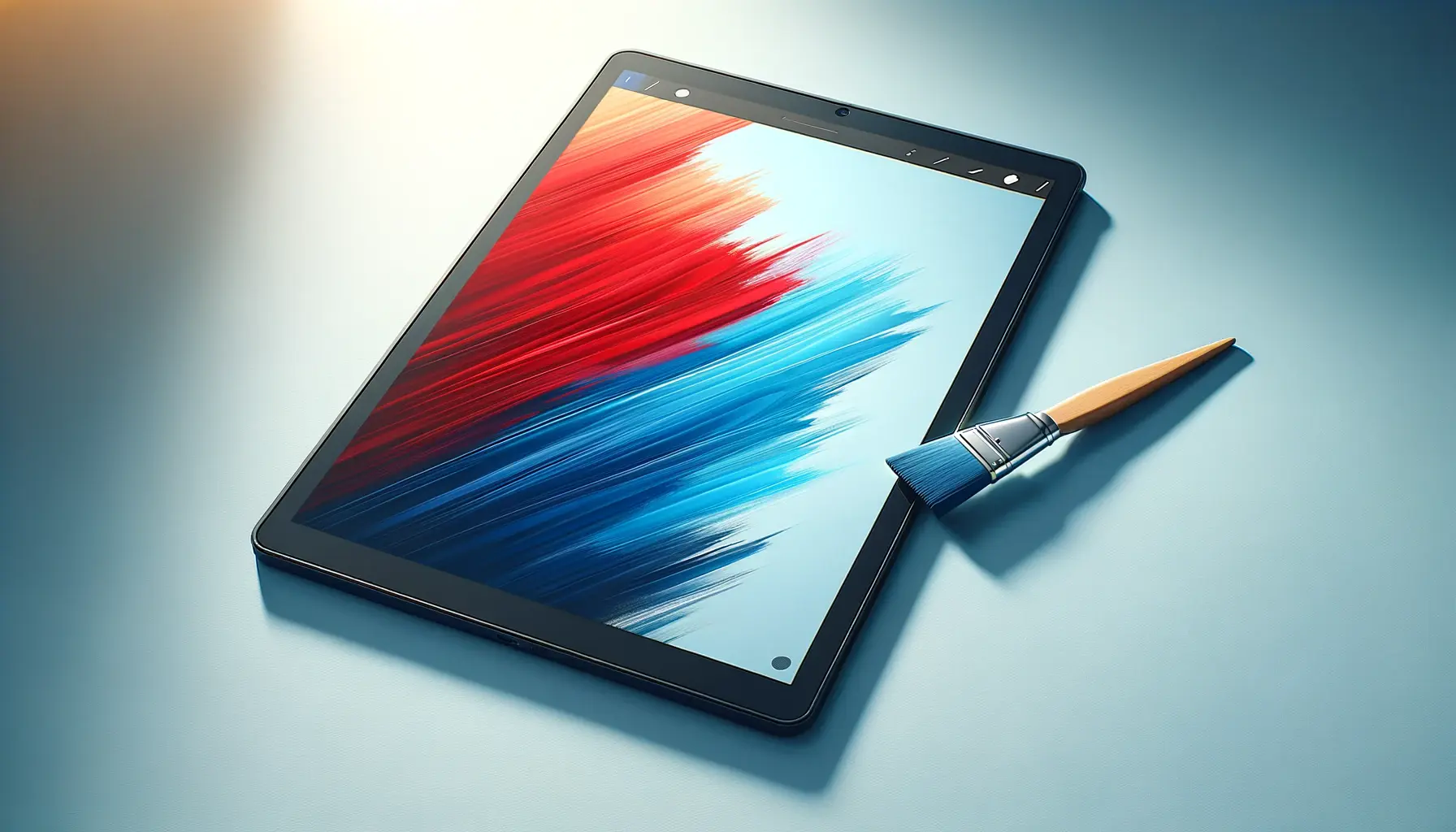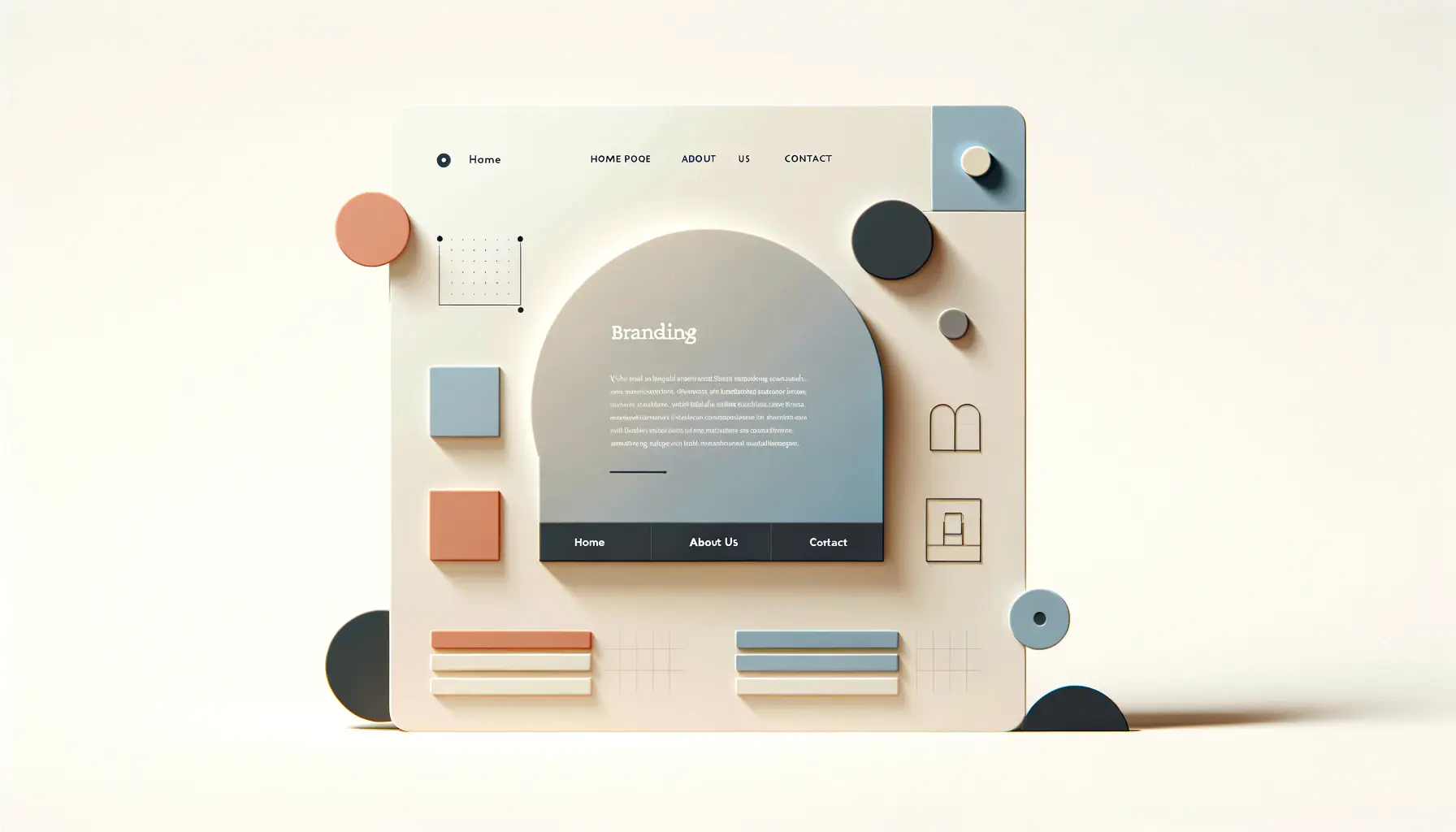The digital landscape is continuously evolving, with global trends in web design playing a pivotal role in shaping how brands present themselves online.
In today’s fast-paced world, a website is not just a digital footprint but a powerful branding tool that reflects a company’s identity, values, and vision.
As we delve into the intricacies of leveraging global trends in web design for branding, it becomes evident that understanding and applying these trends is crucial for businesses aiming to stand out in a crowded marketplace.
Branding through web design is more than just aesthetics; it’s about creating a memorable experience that resonates with the target audience.
The right blend of design elements can significantly enhance brand perception, foster loyalty, and drive engagement.
This article explores how businesses can harness the power of global web design trends to elevate their branding efforts, ensuring they remain relevant and competitive in an ever-changing digital world.
- Understanding the Impact of Web Design on Branding
- Strategies for Integrating Global Trends into Branding
- Case Studies: Successful Branding Through Trend Integration
- Design Elements That Make a Brand Stand Out
- Optimizing Web Design for Brand Consistency
- Future-Proofing Your Brand with Web Design
- Measuring the Success of Your Web Design in Branding
- Conclusion: Harnessing Global Trends in Web Design for Enhanced Branding
- FAQs: Leveraging Global Trends in Web Design for Branding
Understanding the Impact of Web Design on Branding
The intersection of web design and branding is a dynamic space where visual elements, user experience (UX), and brand messaging converge to create a unique digital identity.
A well-designed website serves as a brand’s online ambassador, communicating its ethos and engaging users with compelling storytelling.
The impact of web design on branding is profound, as it directly influences how users perceive and interact with a brand.
From color schemes and typography to layout and functionality, every aspect of web design can contribute to a cohesive and impactful brand image.
Moreover, the advent of new technologies and design philosophies has broadened the scope of what’s possible in web design.
Brands now have the opportunity to leverage cutting-edge trends such as responsive design, minimalism, and interactive elements to craft websites that are not only visually appealing but also highly functional and user-friendly.
These trends not only enhance the user experience but also reinforce the brand’s identity, making it more memorable and distinctive in the digital realm.
Global Trends Influencing Web Design
Several global trends are currently shaping the world of web design, each offering unique opportunities for brands to enhance their online presence.
Responsive design, for instance, ensures that a website delivers an optimal viewing experience across a wide range of devices, reflecting a brand’s adaptability and commitment to user satisfaction.
Similarly, the rise of minimalism in web design, characterized by clean lines and uncluttered layouts, allows brands to convey their message more effectively, emphasizing quality over quantity.
Interactive elements and animations have also become increasingly popular, providing an engaging and immersive experience for users.
These features can be used to highlight key brand messages, guide users through the site, and encourage interaction, thereby increasing engagement and retention.
By staying abreast of these global trends and understanding how they can be integrated into web design, brands can create a powerful and effective online presence that resonates with their target audience.
Incorporating global trends into web design is essential for creating a strong brand identity in the digital age.
Strategies for Integrating Global Trends into Branding
Integrating global trends into your branding through web design requires a strategic approach that aligns with your brand’s core values and objectives.
It’s not just about adopting the latest design fads; it’s about selecting trends that enhance your brand’s identity and connect with your audience on a deeper level.
Here are strategies to effectively incorporate global trends into your branding efforts:
Selecting the Right Trends for Your Brand
Not all global trends will fit every brand’s identity or audience.
It’s crucial to select trends that resonate with your brand’s ethos and appeal to your target demographic.
Consider the following steps:
- Research and Analysis: Stay updated with the latest web design trends by following industry blogs, attending webinars, and analyzing competitors’ websites. This will give you a broad view of what’s current and effective.
- Brand Alignment: Evaluate how each trend can align with your brand’s identity, values, and messaging. The goal is to enhance your brand’s strengths, not overshadow them with trendy design elements.
- Target Audience Preferences: Understand your audience’s preferences and behaviors online. Utilizing user analytics and feedback can provide insights into what design elements resonate most with your users.
Implementing Trends with a Focus on User Experience (UX)
The implementation of any design trend should prioritize the user experience.
A visually stunning website that is difficult to navigate or slow to load can deter users, negatively impacting your brand’s perception.
Consider these aspects:
- Responsive Design: Ensure your website is accessible and provides an optimal viewing experience across all devices. This shows your brand’s commitment to inclusivity and user satisfaction.
- Minimalism: Adopt a minimalist design to make your website more user-friendly. Simplifying the interface can help users focus on your brand’s key messages and calls to action.
- Interactive Elements: Use interactive elements sparingly and strategically to engage users without overwhelming them. Each interactive feature should have a clear purpose and add value to the user’s journey on your site.
Adopting global design trends should be a thoughtful process that enhances your brand’s digital presence while maintaining a focus on user experience.
Case Studies: Successful Branding Through Trend Integration
Examining real-life examples of brands that have successfully integrated global web design trends into their branding can provide valuable insights and inspiration.
These case studies highlight the strategic application of trends to enhance brand identity and user engagement.
Innovative Use of Responsive Design
A leading tech company revamped its website with a focus on responsive design, ensuring that their digital services were accessible across all devices and screen sizes.
This approach not only improved user engagement rates but also reinforced the brand’s image as a forward-thinking and user-centric company.
The seamless transition between devices provided a consistent brand experience, increasing customer loyalty and satisfaction.
Minimalism for Clear Brand Messaging
A luxury fashion brand adopted a minimalist web design, using clean lines, ample white space, and a limited color palette to showcase its products.
This design choice allowed the high-quality images of their products to take center stage, effectively conveying the brand’s emphasis on quality and elegance.
The minimalist design also improved website load times and made navigation more intuitive, enhancing the overall user experience.
Engaging Users with Interactive Elements
An educational platform introduced interactive elements into its web design, such as quizzes and interactive infographics, to engage users and provide a more immersive learning experience.
These elements were carefully crafted to reflect the brand’s commitment to innovative and accessible education.
The interactive features not only made learning more enjoyable but also helped the brand stand out in a competitive market.
- The tech company’s use of responsive design demonstrates the importance of accessibility and user satisfaction in reinforcing brand identity.
- The fashion brand’s minimalist approach highlights how simplicity in design can enhance product visibility and convey brand values.
- The educational platform’s interactive elements showcase the potential of engaging features to create memorable brand experiences and foster user engagement.
Real-life examples of brands successfully integrating web design trends underscore the strategic value of these trends in enhancing branding and user experience.
Design Elements That Make a Brand Stand Out
In the realm of digital branding, certain design elements have the power to significantly elevate a brand’s online presence, making it stand out in a crowded digital landscape.
Incorporating these elements into your web design can transform a standard website into a compelling brand experience.
Color Psychology in Branding
Color plays a crucial role in branding, influencing perception and emotions.
The strategic use of color can convey your brand’s personality and values, evoke specific emotions, and impact user behavior.
For instance, blue can evoke trust and dependability, making it a popular choice for financial institutions, while green is often associated with health and sustainability, ideal for eco-friendly brands.
Selecting the right color palette for your website can reinforce your brand identity and create a visually cohesive experience.
Typography That Speaks Volumes
Typography is another powerful design element that can significantly impact branding.
The choice of fonts and how they are used on your website can communicate your brand’s character and set the tone for user interactions.
A well-chosen typeface can make your content more readable and engaging, while unique or custom fonts can add a distinctive touch to your brand identity.
It’s important to balance creativity with readability, ensuring that your typography enhances the user experience.
Imagery and Visual Storytelling
High-quality, authentic imagery can tell your brand’s story more effectively than words alone.
Whether it’s through professional photography, custom illustrations, or engaging video content, visual storytelling can captivate users and convey your brand message in an instant.
Imagery that reflects your brand’s ethos and connects with your target audience on an emotional level can leave a lasting impression, making your brand more memorable and relatable.
- Using color psychology to evoke emotions and convey brand values.
- Choosing the right typography to communicate your brand’s personality and enhance readability.
- Leveraging high-quality imagery and visual storytelling to captivate users and convey your brand message.
Effective use of design elements like color, typography, and imagery can dramatically enhance a brand’s digital presence and user engagement.
Optimizing Web Design for Brand Consistency
Brand consistency across all digital platforms is essential for building trust and recognition with your audience.
A consistent brand presentation across all platforms can increase revenue by up to 23%.
Optimizing your web design for brand consistency involves careful planning and execution to ensure that every element of your website reflects your brand identity cohesively.
Creating a Style Guide
A comprehensive style guide is the cornerstone of brand consistency.
It outlines your brand’s design standards, including color palettes, typography, imagery, and other visual elements, as well as voice and tone for content.
A well-documented style guide ensures that anyone working on your brand, from web designers to content creators, has a clear understanding of how to present your brand accurately across all digital touchpoints.
Responsive Design for a Unified Experience
Ensuring your website’s design is responsive and provides a seamless experience across all devices is crucial for maintaining brand consistency.
A responsive website adapts its layout and content to fit the screen size of the device it’s being viewed on, offering a consistent user experience whether accessed from a desktop, tablet, or smartphone.
This uniformity reinforces your brand identity and helps build trust with your audience.
Consistent User Experience (UX) Design
Consistency in UX design goes beyond visual elements to include the overall feel and functionality of your website.
This includes maintaining a consistent navigation structure, interaction patterns, and even loading times across the site.
A predictable and familiar user experience makes it easier for visitors to navigate your site and interact with your brand, enhancing their overall perception of your brand’s reliability and professionalism.
- Developing a comprehensive style guide to ensure visual and tonal consistency.
- Implementing responsive design to provide a consistent experience across all devices.
- Maintaining a consistent UX design to enhance usability and reinforce brand identity.
Brand consistency is key to building trust and recognition, making it essential to optimize your web design for a cohesive brand experience.
Future-Proofing Your Brand with Web Design
In an era where digital trends evolve at lightning speed, future-proofing your brand’s web design is crucial for maintaining relevance and competitiveness.
Future-proofing involves designing your website in a way that allows for easy updates and adaptability to new technologies and user preferences, ensuring your brand remains ahead of the curve.
Adopting a Modular Design Approach
A modular design approach involves creating a website with interchangeable components or modules that can be easily updated or replaced without overhauling the entire site.
This flexibility allows brands to adapt to new trends, technologies, and user needs more swiftly, ensuring the website remains fresh and relevant.
Modular design not only enhances the longevity of your website but also streamlines the development process, making it easier to implement changes and updates.
Emphasizing Accessibility and Inclusivity
Designing for accessibility and inclusivity is not just a trend but a necessity for future-proofing your brand.
Ensuring your website is accessible to all users, including those with disabilities, enhances your brand’s reach and demonstrates social responsibility.
Adopting web design standards that prioritize accessibility, such as the Web Content Accessibility Guidelines (WCAG), can future-proof your website by making it more adaptable to regulatory changes and user expectations for inclusive digital experiences.
Leveraging Emerging Technologies
Staying abreast of emerging technologies and considering their potential impact on web design is essential for future-proofing your brand.
Technologies like artificial intelligence (AI), virtual reality (VR), and voice search are reshaping user expectations and interactions with digital content.
By exploring how these technologies can be integrated into your web design, you can create innovative user experiences that set your brand apart and prepare it for future digital landscapes.
- Utilizing a modular design approach for flexibility and ease of updates.
- Ensuring accessibility and inclusivity to broaden your brand’s reach and demonstrate social responsibility.
- Exploring the integration of emerging technologies to innovate and enhance user experiences.
Ignoring the need to future-proof your web design can leave your brand at risk of falling behind in an ever-evolving digital landscape.
Measuring the Success of Your Web Design in Branding
After integrating global trends into your web design for branding purposes, it’s crucial to measure the success of these efforts.
Understanding how your web design impacts your brand’s performance can provide insights into what works well and what needs improvement, allowing for data-driven decisions to enhance your branding strategy further.
Web Analytics and User Feedback
Web analytics tools can track various metrics that indicate the success of your web design in branding, such as user engagement rates, bounce rates, conversion rates, and time spent on the site.
These metrics can reveal how users interact with your website and which design elements are most effective in holding their attention and encouraging action.
Additionally, gathering user feedback through surveys, user testing, and social media can provide qualitative insights into the user experience, highlighting areas for improvement and confirming what aspects of your design resonate most with your audience.
Brand Awareness and Perception
Measuring changes in brand awareness and perception before and after implementing new web design elements can provide valuable insights into the effectiveness of your branding efforts.
Tools like brand tracking surveys and social media monitoring can help gauge public perception of your brand, including awareness levels, sentiment, and association with certain attributes or values.
An improvement in brand perception and increased recognition can indicate successful integration of web design trends into your branding strategy.
Return on Investment (ROI)
Ultimately, the success of your web design in branding can be measured by its return on investment (ROI).
This involves evaluating the cost of implementing new design elements against the benefits gained, such as increased sales, higher conversion rates, and improved customer loyalty.
A positive ROI indicates that your web design efforts are effectively contributing to your brand’s overall success and financial performance.
- Utilizing web analytics and user feedback to assess engagement and user experience.
- Monitoring changes in brand awareness and perception to evaluate the impact of your web design on branding.
- Calculating the ROI of your web design efforts to determine their contribution to your brand’s success.
Regularly measuring the success of your web design in branding is essential for continuous improvement and ensuring your digital presence aligns with your brand objectives.
Conclusion: Harnessing Global Trends in Web Design for Enhanced Branding
In the digital age, where first impressions are often made online, leveraging global trends in web design is not just beneficial but essential for branding success.
As we’ve explored, integrating these trends thoughtfully and strategically can significantly enhance a brand’s online presence, making it more engaging, accessible, and memorable to users.
From adopting a modular design approach for future-proofing to ensuring brand consistency across all digital platforms, the strategies outlined offer a roadmap for brands aiming to stand out in a crowded digital landscape.
Key Takeaways for Branding Success
To encapsulate, the journey of integrating global trends into web design for branding encompasses several critical steps, each contributing to building a stronger, more resonant brand identity:
- Understanding the impact of web design on branding and selecting trends that align with your brand’s core values.
- Implementing these trends with a focus on enhancing user experience and engagement.
- Learning from successful case studies that demonstrate the effective application of these trends in real-world scenarios.
- Employing design elements like color psychology, typography, and imagery to convey your brand’s message powerfully and cohesively.
- Optimizing web design for brand consistency to build trust and recognition among your target audience.
- Future-proofing your brand by adopting flexible design approaches and staying abreast of emerging technologies.
- Measuring the success of your web design efforts through analytics, user feedback, and ROI analysis to inform continuous improvement.
As brands navigate the complexities of digital branding, the integration of global trends in web design emerges as a pivotal strategy for differentiation and growth.
By focusing on creating a user-centric, visually compelling, and technologically advanced website, brands can not only capture the attention of their audience but also foster lasting connections.
The journey towards leveraging these global trends is ongoing, requiring brands to remain adaptable, informed, and responsive to the ever-evolving digital landscape.
In conclusion, the power of web design in branding is undeniable.
By harnessing global trends thoughtfully and strategically, brands can elevate their digital presence, engage their audience more effectively, and carve out a distinctive identity in the digital realm.
The future of branding lies in the innovative integration of design trends, user experience, and technology, creating a digital experience that not only meets but exceeds user expectations, propelling brands towards greater visibility, engagement, and success.
Quality web design is key for a great website! Check out our service page to partner with an expert web design agency.
FAQs: Leveraging Global Trends in Web Design for Branding
Explore common questions about integrating global trends into web design to enhance your brand’s digital presence.
Key trends include responsive design, minimalism, interactive elements, and the use of AI and VR to create immersive user experiences.
Responsive design ensures a consistent and optimal viewing experience across all devices, enhancing brand perception and user satisfaction.
Minimalism focuses user attention on essential content, simplifying the user experience and reinforcing the brand’s core message.
Yes, interactive elements engage users more deeply, creating memorable experiences that can strengthen brand identity and loyalty.
Accessibility is crucial, as it broadens your audience reach and demonstrates your brand’s commitment to inclusivity and social responsibility.
Color psychology influences user emotions and behaviors, allowing brands to convey specific messages and values through their color choices.
Success can be measured through web analytics, user feedback, changes in brand perception, and the overall return on investment (ROI).
Adopting a modular design, prioritizing accessibility, and staying updated with emerging technologies can help future-proof a brand’s web design.











